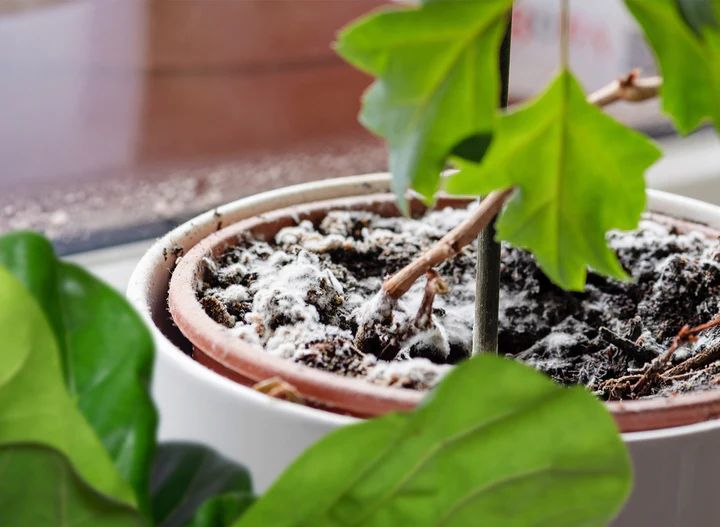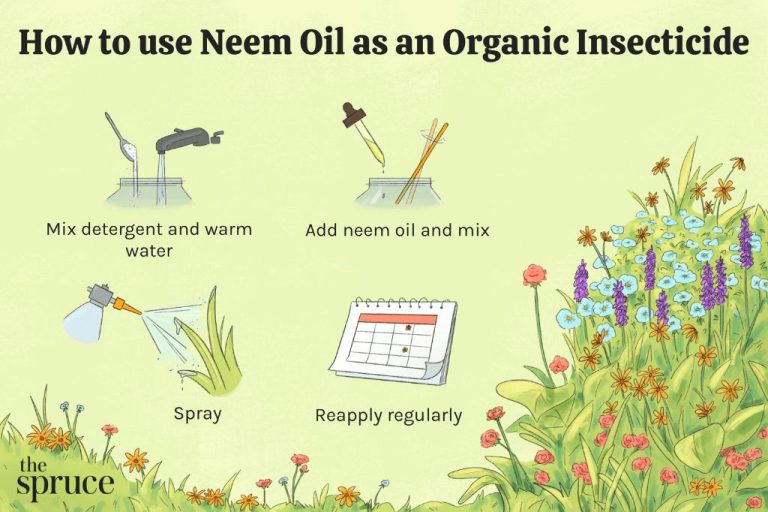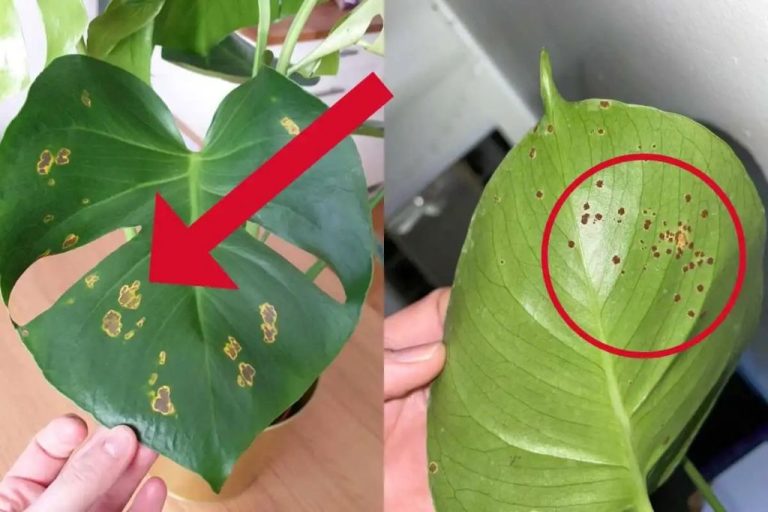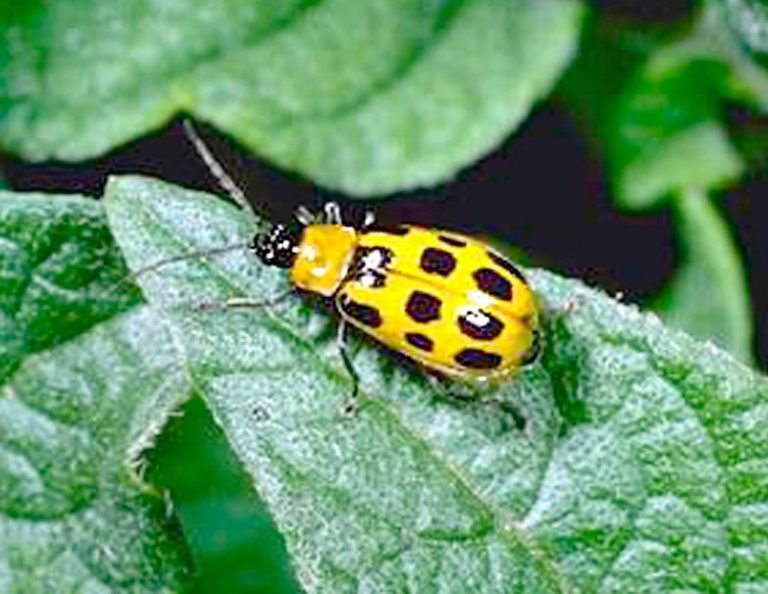Managing Fusarium Wilt: Strategies For Prevention And Treatment
What is Fusarium Wilt?
Fusarium wilt is a common vascular wilt fungal disease that affects a wide variety of plants. It is caused by the soil-borne fungus Fusarium oxysporum (Britannica). This fungal pathogen enters the plant through the roots and spreads through the plant’s vascular system, blocking the flow of water and nutrients (Wikipedia).
Some common hosts of Fusarium wilt include tomato, potato, banana, eggplant, and cotton. The disease can lead to wilting, chlorosis, necrosis, premature leaf drop, browning of the vascular system, stunting of growth, and potentially death of the plant (Extension).
The Fusarium fungus can survive in the soil for many years, even in the absence of a host plant. When a susceptible plant is planted in infested soil, the fungus invades the roots and travels through the xylem vessels. It spreads quickly through the plant’s vascular system, producing spores and fungal toxins that disrupt water transport and cause the characteristic wilt symptoms (Britannica).
Symptoms of Fusarium Wilt
The most common symptoms of fusarium wilt include wilting leaves, discolored vascular tissue, and overall plant stunting and decline.
Infected plants will show signs of rapid leaf yellowing and drooping leaves that fail to recover at night or with watering. The leaves may yellow on just one side of the plant or on individual branches. Over time, the leaves will brown and die.
The pathogen invades the plant’s vascular system, causing the vascular tissue to turn yellow, brown, or red. Cross sections of the stems and roots will show this discoloration of the vascular bundles.
As the disease progresses, infected plants become stunted and experience reduced growth. Plants infected at an early stage are often killed quickly. In mature plants, the symptoms may worsen progressively, eventually leading to plant death.
Overall, fusarium wilt leads to a gradual decline and wilting of the plant. Without treatment, the disease can spread systemically through the plant’s vascular system and may eventually kill the plant. (Source: https://extension.umn.edu/disease-management/fusarium-wilt)
Conditions that Encourage Fusarium Wilt
Fusarium wilt thrives in warm weather conditions, with optimal soil temperatures around 82°F. According to the University of Minnesota Extension, the fungus is more severe in acidic soils with pH levels below 6.5. High humidity also encourages the spread of the pathogen (Source).
The fungus can thrive in both overly acidic and alkaline soils outside of the optimal pH range for the plant. The University of California Integrated Pest Management Program notes that Fusarium wilt impacts plants grown in soils with pH levels above 7.0 or below 6.5. Maintaining the soil pH within the ideal range for the plant can help prevent outbreaks (Source).
Warm temperatures between 75-86°F promote Fusarium wilt infection and disease development. Cooler soil temperatures below 68°F may prevent the disease from occurring even in infected plants (Source).
Preventing Fusarium Wilt
There are several strategies that can help prevent fusarium wilt from occurring in the first place:
Use resistant varieties – Certain varieties have genetic resistance to fusarium wilt. For example, many tomato varieties labeled VFN have resistance to Verticillium wilt, Fusarium wilt, and root-knot nematodes. Check with your local extension office for recommended resistant varieties for your crop and region.a
Practice crop rotation – Rotating crops in a 3-4 year cycle with non-hosts helps reduce inoculum levels in the soil. Avoid planting the same crops from the same plant family repeatedly in the same location.b
Control root-knot nematodes – Root-knot nematodes create wounds in plant roots that provide an entry point for the fungus. Managing nematode populations with crop rotation, resistant varieties, and other integrated pest management strategies helps prevent infection.c
a. Fusarium wilt – UC IPM
b. Fusarium wilt – University of Minnesota Extension
c. Fusarium Wilt: Symptoms, Treatment and Control – Planet Natural
Treating Existing Fusarium Wilt Infections
Once plants are infected with Fusarium wilt, it can be very difficult to eliminate the fungus from the soil. However, there are some strategies that may help manage existing infections:
Remove and destroy infected plants – Pull up and dispose of plants showing signs of wilt. Remove as much of the root system as possible. Do not compost diseased plants as this can spread the fungus. Burn infected plant material if possible (Source).

Improve soil drainage – Fusarium fungi thrive in compacted, wet soils. Improve drainage by amending soil with compost or sand. Create raised beds if soil drainage is poor. Allow soil to dry between waterings (Source).
Apply fungicides – Certain fungicides like thiophanate-methyl may suppress Fusarium, especially if applied preventatively. However, fungicides are less effective once the infection is established. Always follow label directions (Source).
Biological Controls
Biological control using beneficial microbes is one of the most promising strategies for managing Fusarium wilt. Certain bacteria and fungi can suppress the growth and activity of the Fusarium fungus. Pseudomonas bacteria strains have been shown to provide up to 79% control of Fusarium wilt in bananas under field conditions (https://www.frontiersin.org/articles/10.3389/fmicb.2019.00616). Endophytic bacteria and fungi like Trichoderma can also reduce Fusarium infections by 70% or more.
These beneficial microbes work through different mechanisms – they may directly compete with the pathogen, produce antibiotics or enzymes that inhibit the pathogen, or induce systemic resistance in the plant. Applying a mix of several antagonistic microbes provides better control than a single agent.
Organic soil amendments like compost, manure, chitin, and crop residues also suppress Fusarium by increasing microbial activity and diversity in the soil. Compost provides general suppression while specific amendments like chitin increase populations of helpful fungi. Using a combination of compost and chitin can reduce Fusarium wilt incidence by 50-60%.
Overall, biological controls through beneficial microbes and organic amendments provide a sustainable, non-chemical way to manage Fusarium wilt. They are a key component of an integrated disease management plan. However, effects may vary based on environmental factors and application methods. Combining biologicals with other tactics provides the most effective control.
Chemical Controls
Registered fungicides can be an effective tool for managing Fusarium wilt. The most commonly used fungicides include:
- Thiophanate-methyl – This systemic fungicide can be applied as a soil drench or seed treatment. Research shows it is effective against Fusarium when used this way (Source).
- Tebuconazole – This fungicide is taken up through the roots and moves up into the stems and leaves. It should be applied preventatively before signs of disease.
- Fluopicolide – This fungicide helps manage the disease by boosting the plant’s natural defenses. It is most effective when applied early.
Proper application methods and timing are key for good results. Fungicides should be applied preventatively at planting or when conditions favor disease development. Soil drenches and seed treatments get protection started early. Foliar sprays later in the season help maintain protection. Always follow label directions for rates and intervals.
Cultural Controls
Cultural controls involve using good agricultural practices to reduce conditions favorable for fusarium wilt development. Two key cultural control methods are sanitation and proper water management.
Sanitation involves removing and destroying any infected plant material to prevent the fusarium fungus from overwintering and spreading. This includes removing old roots and crop debris from the soil after harvest. Tools should also be sterilized regularly when working with infected plants to avoid spreading the pathogen.
Water management is also important. Excess moisture encourages fusarium growth and infection. Drip irrigation targeted at the roots rather than overhead watering of leaves can help reduce moisture on aboveground plant parts. Allowing the soil to dry slightly between waterings and providing good drainage can also help manage moisture levels.
Crop rotation with non-host plants is another beneficial cultural practice for fusarium management. Rotation breaks disease cycles and allows declining inoculum levels over time. At least 2-3 years rotation is recommended for susceptible crops.
Overall, integrating sanitation, water management, and rotation practices can help reduce inoculum levels and conditions conducive for fusarium wilt development.
Resistant Varieties
One of the best ways to manage Fusarium wilt is to plant resistant varieties that have been bred for resistance. Resistant varieties contain genetic traits that limit the ability of the fungus to infect and spread within the plant. Many vegetables like tomatoes, peppers, eggplants, and melons have resistant cultivars available.
For tomatoes, some resistant varieties includeMountain Pride, Celebrity, Better Boy, Ace 55, and Marglobe 1. Resistant pepper varieties include Paladin, Camelot, King Arthur, and Imperial 1. Some melon varieties like Sidekick and Athena have resistance 1.
Eggplant varieties like Epic, Dusky, and Calliope have moderate resistance while Nadia and Nirala have high resistance to Fusarium wilt1. Lettuce varieties like La Brillante, Salinas, and Pavane have resistance as well1.
Plant breeders are continuously working to develop new resistant varieties. Breeding programs select parent plants that show resistance and cross breed them to produce resistant offspring. The resistant offspring are grown and selected over multiple generations until varieties with strong, reliable resistance are achieved.
Integrated Management
The most effective approach for managing fusarium wilt is to use integrated pest management, which combines multiple preventative, cultural, biological and chemical controls. According to research, an integrated approach can reduce disease incidence by up to 85-90% (Integrated management strategies for tomato Fusarium wilt, 2013).
Key aspects of an integrated fusarium wilt management plan include:
- Preventing introduction of the pathogen through seed treatments, clean equipment, and disease-free transplants.
- Improving soil conditions through additions of organic matter, maintaining proper pH, and avoiding over-watering.
- Using biocontrol agents like Trichoderma strains to suppress fusarium populations in the soil.
- Applying targeted fungicide drenches or sprays during key disease development stages.
- Growing resistant or tolerant varieties when available.
- Rotating between unrelated crops to avoid pathogen buildup.
- Monitoring regularly and adjusting tactics as needed based on scouting results.
No single method can completely control fusarium wilt. By integrating multiple tactics, incidence can be suppressed to economically acceptable levels. Continual monitoring and adaptative management are essential to deal with this persistent soilborne pathogen (Integrated Management of Fusarium Wilt Diseases, 2014).






